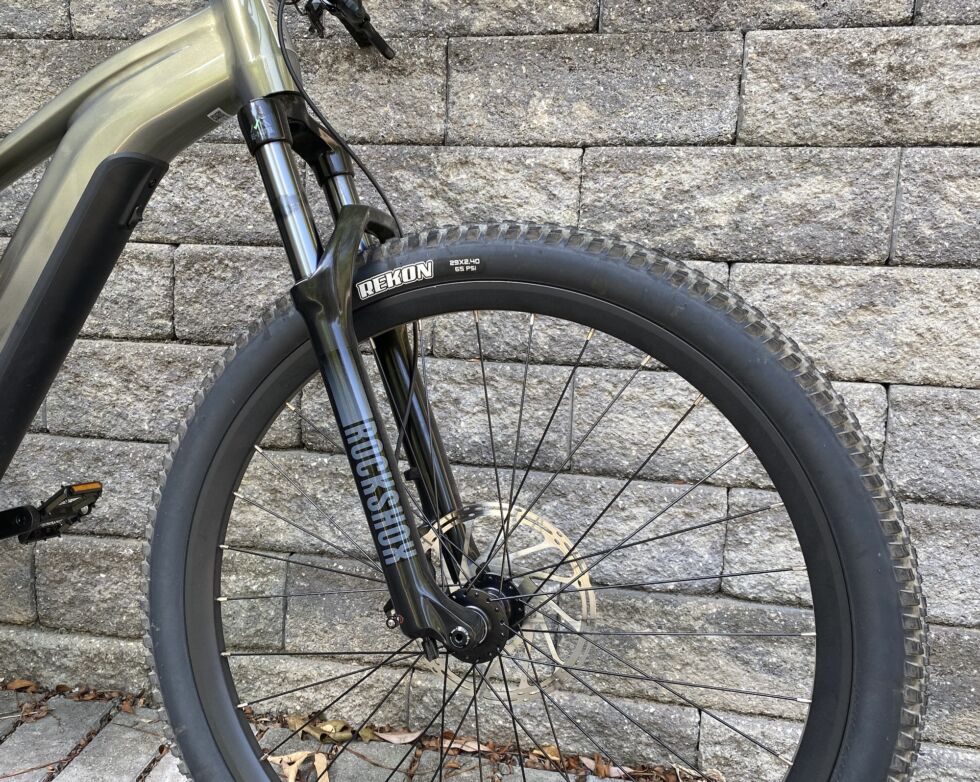
John TImmer
Full suspension mountain bikes are complicated beasts, with sections of the frame that pivot and a shock absorber to moderate that pivot. These parts help limit the bumps that reach your body and keep your rear tire in contact with the trail across all sorts of terrain and obstacles. The complexity and additional parts, however, boost the costs of full suspension bikes considerably, a situation that only gets worse when you electrify things.
As a result, some of the electric mountain bikes we’ve looked at are either very expensive or make a few too many compromises to bring the price down. Even aiming for middle-of-the-road compromise hardware costs in the area of $5,000.
But there’s one easy way to lower the price considerably: lose the full suspension. The electric “hardtails” from major manufacturers typically cost considerably less than a full suspension bike with similar components. And because the engineering demands are considerably lower than in a full suspension bike, it’s easier for some of the smaller e-bike companies to put together a solid offering.
So over the course of the spring and into the summer, I’ve been testing two hardtail mountain bikes that were recently introduced by e-bike specialists. First up is the Aventon Ramblas.
The hardware
Aventon is one of the larger dedicated e-bike makers and offers a wide range of bikes at competitive prices. Most of them fall into a sort of generic “commuter” category, though; the Ramblas is the first offering from the company made for a specific audience (though it’s also categorized as a commuter option on the company’s website). It’s also the first bike the company is offering above the $2,000 price point. At $2,899, it’s actually more expensive than one of the electric hardtail models being cleared out by Trek, a company that does not have a reputation for affordability.
What do you get for that price? Solid low/mid-range components from SRAM, including its NX Eagle drive train. There’s a dropper seat, a front suspension from RockShox, and Maxxis tires. The fork is coil based, so it doesn’t offer much in the way of adjustment—what you start the ride with is pretty much what you’ll spend the entire ride experiencing, unlike many alternatives that let you firm up the ride for pavement. (It has a rebound adjustment at the bottom of the fork, but the effects are subtle.) Aventon doesn’t list who makes the rims on its website, and there are no external indications of the manufacturer there.

John TImmer
Overall, it’s about what you’d expect from an entry-level offering. I don’t have any concerns about the durability of the components, and their performance was mostly fine. The one thing that did concern me was the plastic cover over the battery, which didn’t fit against the frame snugly and was only held in place by relatively weak contacts at each end. It’s enough to handle some water splashed off the front wheel, but I wouldn’t trust it to protect the battery while fording anything significant.
Saddle and pedals are matters of personal taste, and many people will argue they’re irrelevant because any serious cyclist will want to replace them anyway. But that’s far less likely to be true on the budget end of the scale, so I did most of my riding on what came with the bike. The pedals, while lacking the threatening-looking screws of serious mountain bike offerings, worked out fine when paired with a sticky set of mountain bike shoes, though I felt I had a bit more confidence going over bumps on a ride where I swapped in my clipless pedals.
The saddle, however, was a problem, in part because the frame was a bit too small for my relatively long legs. The saddle has a relatively slick surface that, when combined with my road biking shorts, meant I tended to slide toward the back of the seat over time. A better-fitting frame might have solved this issue (the large version was supposedly rated up to my height, but I clearly should have gone for the XL).

John Timmer
Speaking of the frame, Aventon has detailed measurements of the geometry available if those make sense to you. But my experience was that the bike was fairly compact in the seat-to-handlebar dimension, leaving me feeling that I was leaning over the handlebars a bit more than I do in other bikes. It wasn’t uncomfortable; it just felt different.












